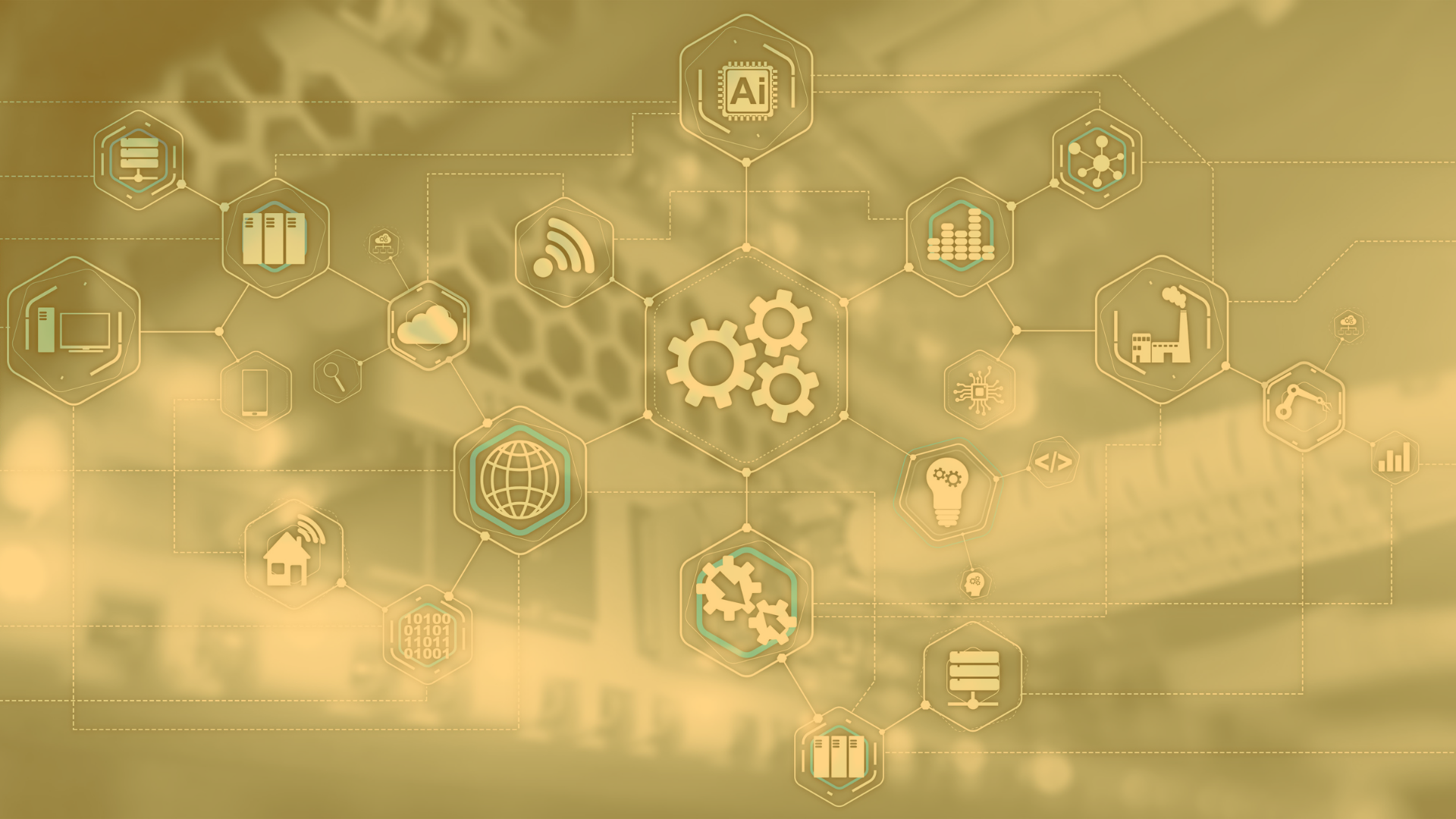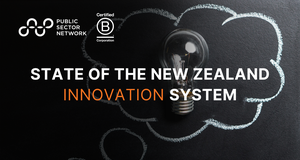Driving Efficiency through Process Automation
Government Case Study: Lessons learned – Agile technology responses to government initiatives during COVID

Mehrdad Fatemi
Digital Enterprise Architect,
Ministry of Education
At the recent Process Automation virtual event, we heard from Mehrdad Fatemi , Digital Enterprise Architect, Ministry of Education as he dived into how to respond to the Government for existing automation technologies into agile and interconnected systems, to drive productivity and prioritise higher-value work. In this article he explores:
- Reflecting upon departmental changes and key learnings that resulted from the Covid-19 prompted transformation
- Building resilience through automation updates to withstand future challenges and move beyond manually processing tasks that could be performed by existing technologies
- Exploring key toolbox elements of DevOps application in Government
Providing accessibility during
a pandemic
Most of us, especially those who work in or around the public sector, take for granted the fact that we have access to technology and the know-how to use it. Whilst computers and the internet have changed the way so many people connect, play, and work, not everyone has the same access or ability to use the technology that for many of us is so prevalent and essential. This was especially the case during New Zealand’s COVID-19 lockdown in 2020.
Even before the pandemic hit, Mehrdad Fatemi , the Digital Enterprise Architect at the Ministry of Education, says that they’ve always known that there was “a significant cohort of families who did not necessarily have access to digital resources at home.” Working towards changing that is one of the goals of the Ministry, though they know that the digital divide is not something that is going to be solved by one agency or even multiple agencies.
”Addressing the digital divide is an extremely complex matter that is not just about deploying resources. It is about ensuring that people have got the access, the skills, the motivation, the trust and a supportive environment to make the most of the resources. But it is also about policy and online harm prevention.
Some people, no matter what resources they have access to, will never take up the opportunities that are presented to them. Nonetheless, the Ministry is responsible for students and providing them with the best possible prospects, so based on 2019 numbers, they started working with “about 15 schools” to assist their students to gain access to the internet. Once the pandemic hit and the country went into lockdown, “we still needed to provide students with resources because they needed to continue their education when they couldn’t attend school.” Essentially that meant that every student needed to be set up for remote education, but for those who were disconnected, “we decided to focus on access to technology and affordability.”
By April 2020 the Ministry went from working with 15 schools to “about 800,000 students in 2,500 schools.” It was also anecdotally noted that across the country there were “approximately 100,000 students living in 50,000 homes who did not have access to the internet or to devices.” Although these numbers were known, “we didn’t know who they were.” The first task, therefore, was to “identify the eligible families.” Since the country was in the midst of stage 4 lockdown with borders closed, “modems were scarce” and even getting devices to families was difficult and a “massive logistics initiative,” but getting the devices and delivering them was still considered simpler than “the connectivity issue. The focus – at least initially – was on getting internet connections to people’s homes.”
Since remote learning was mandated throughout the whole country, “we made things simple and decided that you were eligible if you had a school-aged child in your household and weren’t connected.” Through the schools and various sources, getting a list of all homes with school-aged children was relatively easy. But short of calling them all, identifying which ones weren’t connected was much more complicated. So the Ministry worked with “wholesale telco providers and mobile operators” and “under strict confidentiality, asked them to tick off the ones that didn’t have an active connection.” It took quite a bit of negotiation and coordination, but after working with “about 37 different customer databases in the country we ended up with a list of 65,000 addresses. That became our target working list.”
Though even once the addresses were identified, being in lockdown “we couldn’t send technicians out so we had to pick a technology solution that required minimal or no contact, and we chose self-installing modems,” which were able to be sourced in bulk. Very early into the delivery operation though, a number of issues were discovered. The first was that “modems were being delivered to homes without students.” The databases provided by the schools were sometimes “up to six years old” because most people don’t immediately update their addresses with their school if they move house, especially if their kids are about to finish school. The second issue was that the telco industry “is highly automated and highly inflexible.” This became apparent because the Ministry “asked the telcos to send the modems to schools so that they could make sure they were being handed over to the students who actually need them.” But the inflexible telco policy was that they could only “deliver a device to where it’s going to be installed.” This made the logistics process even more complicated with additional steps and unnecessary delays.
One of the other challenges was to do with the “cohort of families we were dealing with.” In terms of the Pareto Principle of the 80-20 rule, most of these families were part of “the 20%, meaning they were the hardest to service with odd and often complex living arrangements.” For instance, many of the families were transient or broken, so the kids lived some days with their mothers, some days with their fathers, and in some cases, they lived with other relatives or even in crisis accommodation. There was clearly “a lot of movement” which made connectivity all the more difficult. On top of that, many of the families were in the lower socio-economic rungs of society and in some cases, with little experience of technology or maybe even with poor literacy. Often “that presented a technical challenge. Even with simple instructions, some tried to connect the modem but couldn’t or didn’t know how.” It turned out that some plugged things into the wrong ports or used the wrong plugs, whilst in one case, “they hadn’t removed the plastic cap from the power cable before connecting, which likely shows they had never had a new device before. Dealing with these kinds of families is still our biggest challenge. We are using community and school groups to reach out to them, but our success is variable.”
Long-term challenges and
successes
The pandemic has not yet disappeared, but the immediate need has diminished. Of the initial 65,000 identified addresses, NZ Post could not find “around 5,300 of them” and for a range “mostly data-related issues, about 20,000 were rejected.” That is quite a “significant number,” but it still means that around 40,000 homes received modems and were able to connect. These were families who previously had no access to the internet or internet-enabled devices. Of these, “over 5,100 were in rural areas.” However, the real challenge is to see if all of these families continue to use the internet and their devices in the long term.
For most of the families in this cohort, “unless there is a significant shift in the family income, simply providing them with free connections is not going to be sustainable. The issues of affordability are not likely to go away.” Paying for connections costs money, as does making sure “the service works consistently.” Maybe it is time to think about some of these issues differently? For instance, “we are working with agencies looking at the possibility of having a universal service available to all homes in the country. It will essentially ensure citizens can participate in the digital society regardless of their level of income or financial status.” It involves complex negotiations and will take a lot of time to come to fruition, but the discussions have begun.
In the meantime, though the process of “connecting families in the middle of a pandemic was a difficult one, the best part of our program was that everybody stepped up and went out of their way to make it happen. Despite the fact that we had issues with data, with processes, and with logistics, everyone worked hard to make sure that kids got the access to the internet that they required.”





















